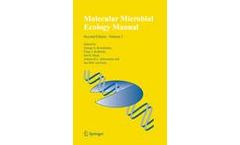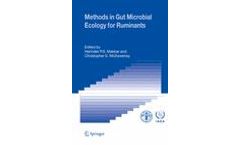microbial-ecology books
9 books found
Industrial companies today face a number of challenges. For starters, they need to balance profitability with environmental responsibility and CSRD (Corporate Sustainability Reporting Directive) reporting regulations. At the same time supply demands continue to increase at a staggering pace due to an ever-growing global population. This puts enormous pressure on production systems, that are ...
Industrial companies today face a number of challenges. For starters, they need to balance profitability with environmental responsibility and CSRD (Corporate Sustainability Reporting Directive) reporting regulations. At the same time supply demands continue to increase at a staggering pace due to an ever-growing global population. This puts enormous pressure on production systems, that are ...
Microbes are key drivers of the world's ecosystems. The vast majority of the world's diversity and metabolic potential lies within micro-organisms, yet we are just beginning to understand and utilize this ultimate resource of biological diversity. Critical to our exploration of the microbial world are methods that allow for the analysis of organisms that are invisible to our eyes, difficult to ...
Microbes are key drivers of the world's ecosystems. The vast majority of the world's diversity and metabolic potential lies within micro-organisms, yet we are just beginning to understand and utilize this ultimate resource of biological diversity. Critical to our exploration of the microbial world are methods that allow for the analysis of organisms that are invisible to our eyes, difficult to ...
Microbes are key drivers of the world's ecosystems. The vast majority of the world's diversity and metabolic potential lies within micro-organisms, yet we are just beginning to understand and utilize this ultimate resource of biological diversity. Critical to our exploration of the microbial world are methods that allow for the analysis of organisms that are invisible to our eyes, difficult to ...
Volume 15 covers such topical matter as the effects of ultraviolet radiation on phytoplankton and the ecology and biogeochemistry of in situ groundwater bioremediation. ...
Until recently, knowledge of ruminant gut microbiology was primarily obtained using classical culture based techniques, which probably only account for 10 to 20% of the rumen microbial population. New gene-based technologies can now be employed to examine microbial diversity through the use of small sub-unit ribosomal DNA analysis (e.g. 16S rDNA) and to understand the function of complex ...
This book continues the excellent treatment of microbial ecology exhibited in recent volumes in the series. In particular, it looks at marine and aquatic environments and the recent work being done in these fields of ecology. ...
Grain legume crops, e.g. common bean (Phaseolus vulgaris L.), and soyabeans (Glycine max L.) are amongst the main sources of protein in Africa, Asia and Latin America. Their high protein content derive from their ability, in symbiosis with Rhizobium bacteria, to fix atmospheric nitrogen. Incorporating contributions from molecular biologists, microbiologists, plant breeders and soil ...



